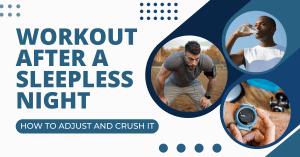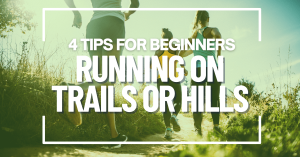There’s no doubt that these are unprecedented times and while our running is only a small blip on the many things we worry about each day, it can also be a stress reliever and something to focus on each day now that you have a lot of extra time on your hands.
And, lucky for you, this can actually be a huge opportunity to make massive improvements to your running fitness – even if you can’t get to the gym, don’t have a race to train for, and maybe can’t even get outside as much as you like.
In this article, we’re going to look at 4 ways you can take advantage of the situation to become a better runner.
Strength and Injury Prevention DO NOT Require a Gym
Yes, you’re stuck at home, but that doesn’t mean you can’t make amazing progress with your running-specific strength and injury prevention work.
90% of the most effective strength exercises for runners do not require a gym or equipment (and we’ll show you some).
In fact, take a look at the research here on the most effective hip strengthening exercises for runners. These 5 exercises don’t require equipment and will help you make huge strength gains.
You can do the same for your core, lower body, upper body and any recurring injuries you might have. 15-20 minutes is all you need.
This alone will help you emerge from this situation a stronger, more injury-resilient runner.
If you need help finding effective routines or need some motivation, consider joining us for live, at-home daily strength training workouts.
If you can’t join live, you can still get access to the videos and routines to follow along on your own.
Focus on Recovery and Injury Prevention
Along the same lines, now that you’re at home more you can put into practice all those “little things” you mean to do now that you have more time.
No doubt you’ve heard about active stretching, foam rolling or yoga to help with recovery and injuries.
Well now is the time to start trying these things out.
If you’re not sure where to start or need some guidance, we’ve put together this great downloadable resource to help you get started with foam rolling and active stretching. Just enter your email here and we’ll send it over.
Likewise, if you’re someone who always has something nagging them or can’t seem to get through a training cycle without a hiccup or two, this situation might actually be the best thing that can happen to you long-term.
Now you can take your foot off the gas and really focus on what you need to get healthy. This might mean…
- If you currently have an injury, back off your training and focus on therapy. (here’s a good guide to start based on your injury)
- Start working to find the underlying causes for your injury because most times, simple strength training isn’t enough. It’s only the first step. Here’s a video that explains how
- If you’re not injured now, but always seem to be bothered by something during training, start assessing where you’re weak and where you might be tight or inhibited. Here’s a video to help with that.
With No Races, Work on Your Weaknesses
One of the most common reasons runners hit a plateau is that they don’t work on their weaknesses between races (either they don’t give themselves the time by racing too frequently or they take a break from training between races).
Here’s why this works.
When you’re strong in a particular area (maybe you have natural speed or natural endurance) or focus almost entirely on one distance, the primary energy systems used for that event are maximized in training.
The energy systems you don’t use during that race specific training plan get little work and lag behind.
Unfortunately, at some point you will hit a point of diminishing returns where your stronger system can’t progress until you improve the lagging system.
A good way to visualize this concept is to think of a how window blinds work.
To raise a blind, you usually have two strings you need to pull. Each string controls one side of the blind.
If we imagine the blinds themselves to be your race performance and the strings to represent separate energy systems, you’ll find that you can only raise one side (pull one string) so far before you need to also begin raising the other string.
Therefore, by focusing on your weaknesses now, you’re able to make progress long-term, even without training as hard.
And, that’s how you’re able to turn this negative situation into a positive. You can now work on your weaknesses and become a more well-rounded, healthier, and much stronger runner.
How to work on your weaknesses.
If you lack endurance, but have speed.
If you’re a speed demon or have noticed that your shorter distance races are better, in comparison, than your longer races then you should concentrate on endurance based workouts, long runs, and aerobic development.
An example would be reducing your intensity and slowly increasing your mileage. With reduced intensity, your body should be able to handle more mileage easier and thus adapt so you can carry it over to your next race.
With no race on the horizon, you’re not stressed to include intensity like you normally would be.
If you lack speed, but have lots of endurance
If you’re an aerobic monster, if you’ve run a few marathons in a row, or maybe you’re an older runner, then you should focus on improving your speed and mechanics.
An example would be slightly reducing your mileage and backing off some tempo run sessions and instead including more speed development work, strides, and explosive hill sprints.
You can also start to include lots of drill work, plyometrics, and other exercises designed to improve your power and efficiency. Things you might not normally have time for with a full mileage load.
In the end, we all know these are challenging times. But, in my experience, with challenge and adversity comes an opportunity to focus on improving and making ourselves better each day.







